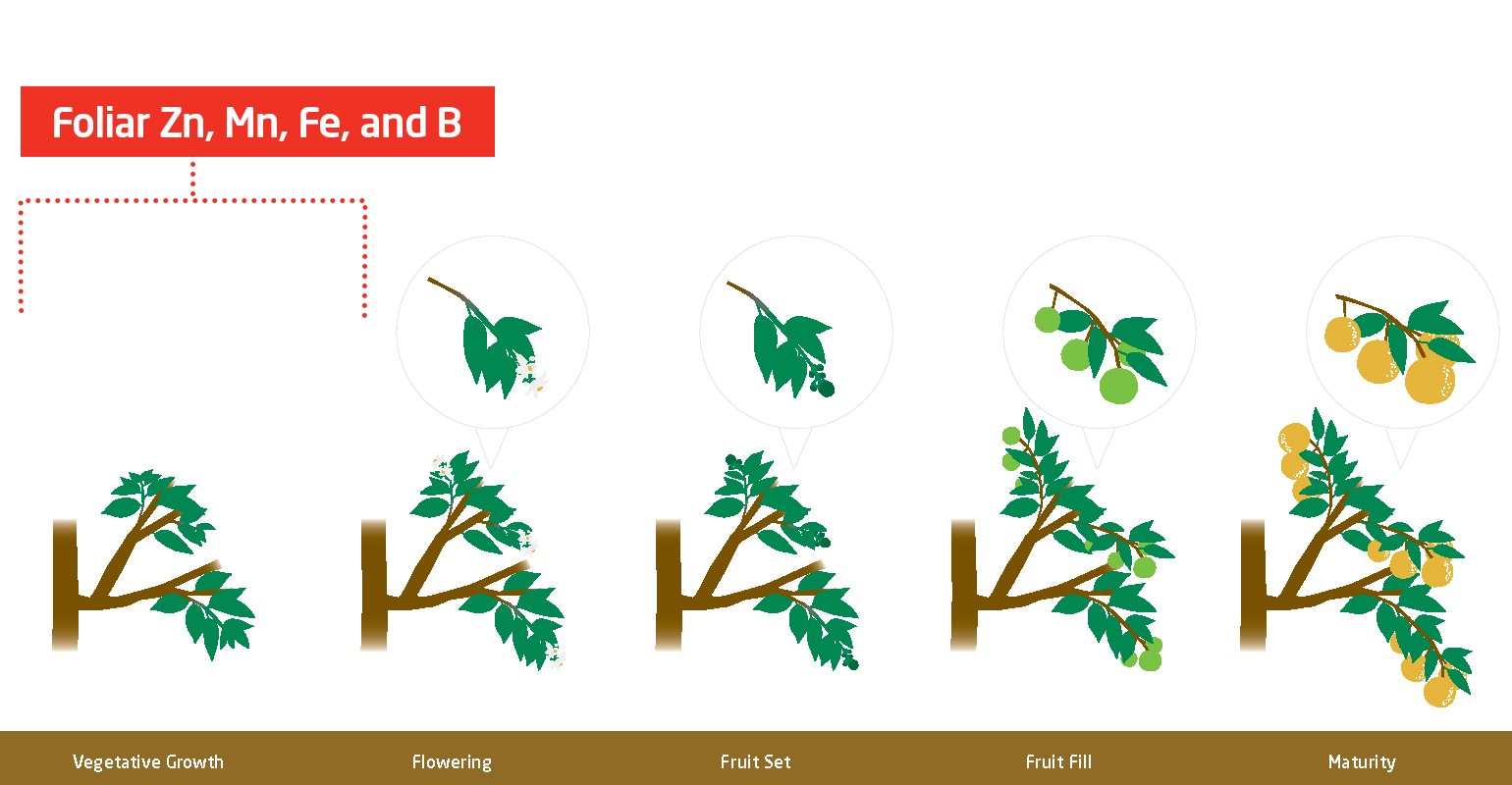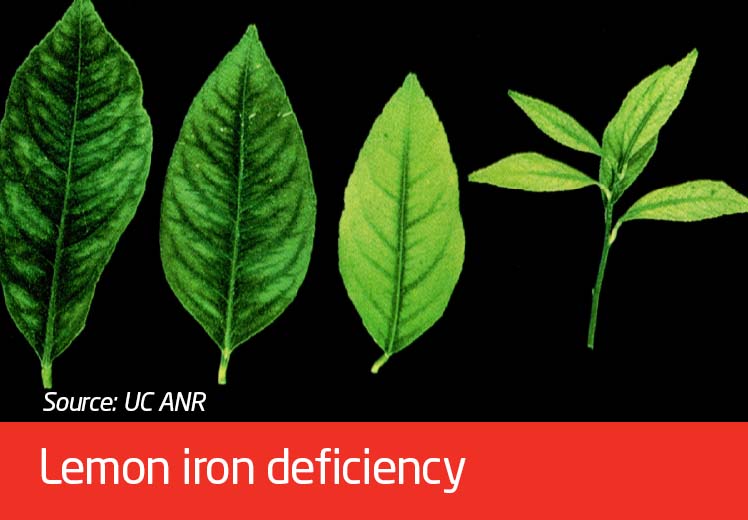Foliar Micronutrients During Spring Leaf Flush on Citrus
November 05, 2021
Agronomics / Background
Citrus trees typically have 3 or more cycles of new vegetative growth each year. The most critical of these for fruit production is the spring leaf flush since it coincides with both flowering and early fruit development. During this period, there is a relatively short window for a high demand of several micronutrients critical to chlorophyll production, photosynthesis, energy production, and fruit set. A foliar spray of these nutrients during spring leaf expansion will help kick start citrus trees and facilitate early carbohydrate production that will be necessary to maximize fruit set and sizing after bloom.
Zinc (Zn) is essential to many processes such as pollination, cell division, protein synthesis, and auxin production which is critical for shoot expansion. Manganese (Mn) plays an important function in the photosynthetic process and cellular respiration. Iron (Fe) is essential for chlorophyll production making a key driver for photosynthetic efficiency. Iron is also involved in respiration and nitrogen metabolism. Boron (B) is needed for pollination and fruit set and contributes to cell wall development in both leaves and fruit during periods of rapid growth.
Conditions Leading to Micronutrient Deficiencies
Zinc deficiencies are common in citrus orchards all over the world, while manganese, iron, and boron deficiencies are somewhat less common. Zn, Mn and Fe deficiencies are most often associated with high soil pH levels which inhibit uptake. High soil phosphate levels have also been shown to induce zinc deficiencies. Boron availability in the soil is best between pH 5 to 7. Uptake of B can also be inhibited in soils with high levels of Calcium.
Root uptake of these micronutrients is an active process that will occur more readily in warmer soils. Spring leaf flush for citrus often takes place when soil temperatures are still relatively low. Furthermore, new feeder roots don’t typically emerge until early June in California, so nutrient uptake can be limited during early spring.
Zn and Fe have limited mobility within citrus plants, while Mn and B have no mobility at all. This combination of poor mobility within the plant, and limited soil uptake, makes transient deficiencies of these micronutrients likely during spring flush and flowering.
Desired Micronutrient Tissue Test Values
Standard tissue sampling procedure for citrus is to pull 5-7 month-old spring flush leaves from non-fruiting shoots. This means that fertility decisions for the spring will be based upon samples pulled in September or October of the previous year.
Zn and Mn levels should be at a minimum of 25 ppm, while B level needs to be at 30 ppm or better. Fe can be difficult to manage based on tissue sampling, but 60 ppm is typically a good benchmark.
Key Application Timings and Rates
Due to the role these micronutrients play in fruit set, chlorophyll production, photosynthesis, and leaf growth, spring flush is a good time to make a foliar spray. This window can start as soon as the new leaves become visible and should occur prior to bloom initiation to ensure a good fruit set. Young leaves tend to have less cuticular wax, so foliar nutrient uptake should be very efficient at this time. It is always better to make foliar nutrient applications proactively before deficiency symptoms occur, rather than reacting after they occur.

BRANDT Products
Brandt’s Manni-Plex line is complexed with sugar alcohols for efficient plant uptake and increased mobility within the plant. They are highly effective liquid foliar nutrient formulations that fit well into leaf-out sprays. For boron, Brandt Smart Boron products are highly effective and tank mix well with other nutrients in the tank.
- BRANDT® Manni-Plex® for Citrus
- BRANDT® Manni-Plex® Zn
- BRANDT® Manni-Plex® Mn
- BRANDT® Manni-Plex® Fe
- BRANDT® Smart B
- BRANDT® Smart B-Mo
For the Manni-Plex products, rates of 1-2 qt/acre work well on citrus. For the Smart Boron products, 1 pt/acre is the optimum rate.





Trial Data
Foliar Zinc Trial on Pinot Noir Wine Grapes conducted in Soledad, CA in 2020
Application Info:
- Application June 2, 2020
- Tissue sampled 24 hours prior to application then sampled 1 day, 3 days, and 6 days after
- Shoot Tip sampled at 14 days after application
